The Victorian Gun Battery existed on Hillsborough from 1875 to 1914.
It was manned by the 14th (Ilfracombe) Devonshire Artillery Volunteer Corps (AVCs) created in June 1875 as a unit of the 1st Administrative Brigade, Devonshire Artillery Volunteers, with its HQ based in Exeter.
The AVC’s were part of a new Volunteer Force created originally in 1859 from an existing citizens’ army of part-time rifle, artillery and engineer corps. It was a popular movement throughout the British Empire at that time. Most of the regiments in today’s Army are directly descended from these Volunteer Force units.
Soon after the AVC’s creation the Government decided to equip some of the coastal Corps with heavy guns, including Ilfracombe.
The 14th (Ilfracombe) Devonshire Artillery Volunteer Corps gun battery was then built next to Beacon Point, on the north-west side of Hillsborough.
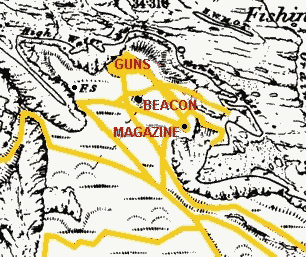
The battery is shown on the Ordnance Survey map of 1889 (above). At the centre of the site is what looks like a simple kiln which may have been used to make lime to construct the battery. One of many lime kilns in the area.
The guns were placed on a concrete platform to the north west of Beacon Point strategically overlooking the approach to the harbour. An associated Magazine building was also constructed at the opposite edge of the site to the south east. To the west was an iron pole (marked F S on the map). A red flag was flown on it when the guns were being fired.
In 1880, the AVCs where consolidated and the 1st Devonshire Administrative Brigade became the 1st Devonshire AVC. The 14th (Ilfracombe) Devonshire Artillery Volunteer Corps then became No 10 Battery.
The initial guns stationed on the Battery were a rifled 64-pounder gun and a smooth-bore 32-pounder gun (a mortar).
In 1888 a new 64-pounder gun replaced the old 64-pounder and a few years later the mortar on Hillsborough was replaced by a second 64-pounder gun (see picture below).
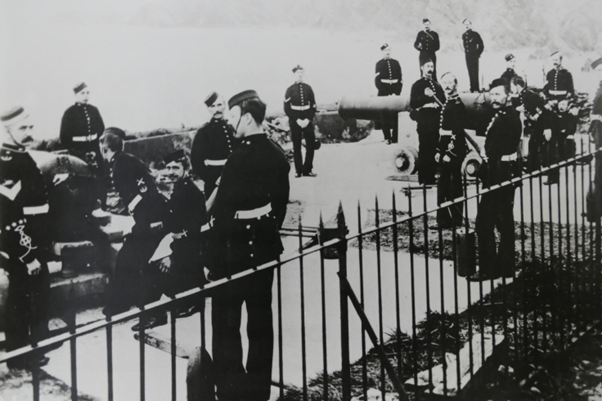
By 1904 the two 64-pounder guns were outdated, being muzzle-loading and mounted on standing garrison platforms, which were difficult to turn from side to side.
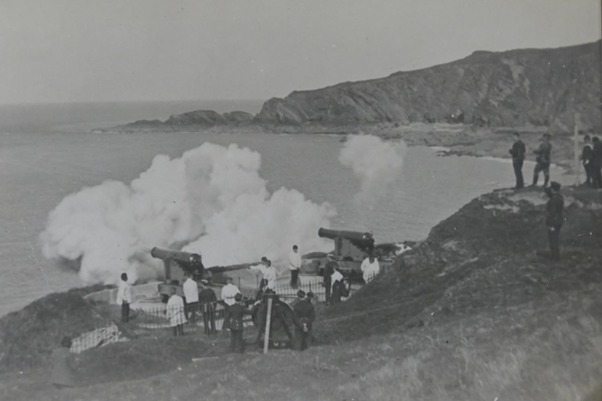
More new guns arrived at the end of 1905 (see pictures above and below). These were mounted on C pivot traversing platforms that could rotate from side to side. A part of the rails of one is still in place but the rails of the other have fallen onto the beach below.
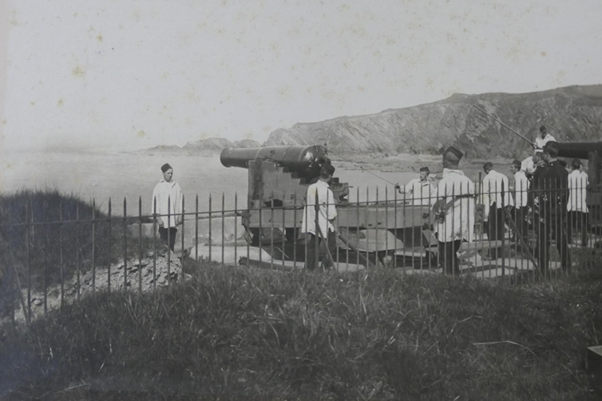
Below is a picture looking east on the part of Beacon Point directly above the actual gun battery, a good view! With Rillage Point in the background.
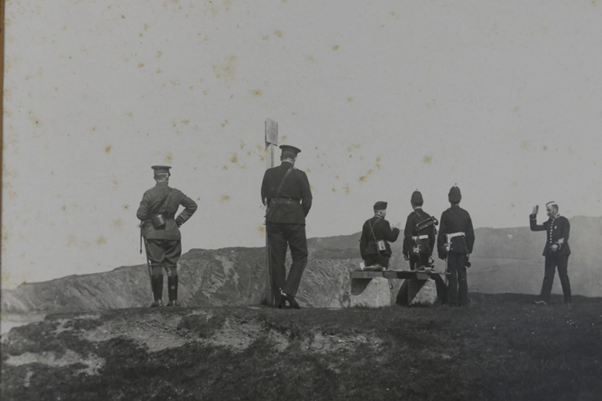
The Volunteer units were disbanded in 1908 and the 10th Battery became part of the local Territorial Army. By 1913, No. 1 Heavy Battery Ilfracombe as it was then known had over 80 members.
The picture below is one taken in 1900 of the Ilfracombe Volunteers on parade on the Brimlands field on the south side of Hillsborough.
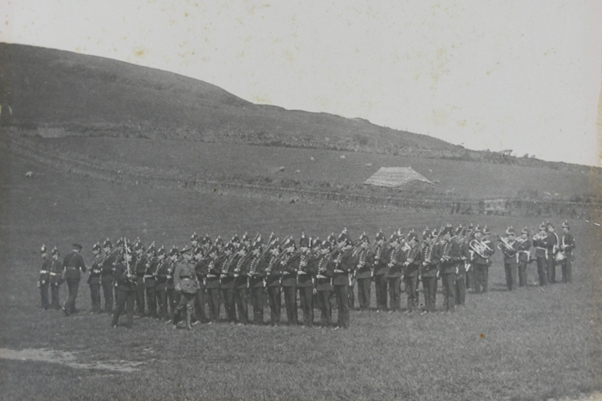
The Territorials left Ilfracombe on 8th August 1914 to fight in France and many never came back.
The guns are said to have been buried soon after the start of WW1, so that Ilfracombe could not be classed as a fortified town and be fired upon by enemy vessels. A fear fuelled by the story of a young Kaiser Wilhelm II who whilst visiting Ilfracombe in 1878, had a fight with a local lad! See the BBC link below for the full story.
Finally the guns were supposedly blown up for scrap during WW2.
Beacon Point has suffered a great deal of coastal erosion since the guns were dismantled well over 100 years ago. The pictures below show all that remains of the Gun Battery site as it is today.
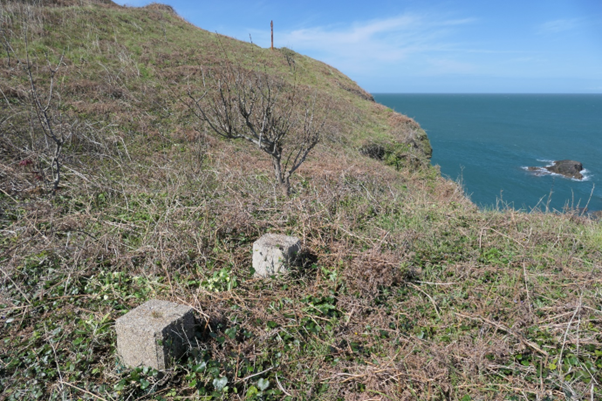
Looking north west on the area directly above the old gun battery towards the ‘firing’ flagpole.
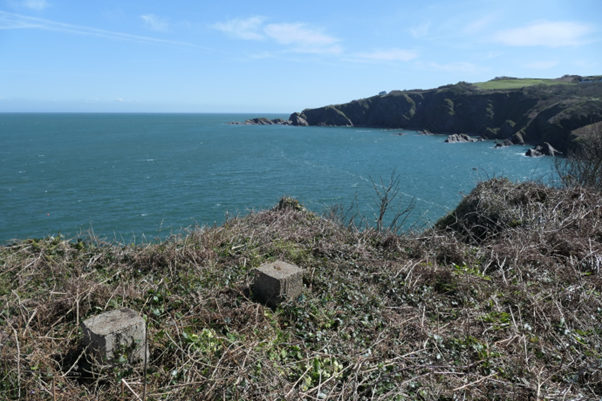
Looking east towards Rillage Point, on the part of Beacon Point that was directly above the old actual gun battery.
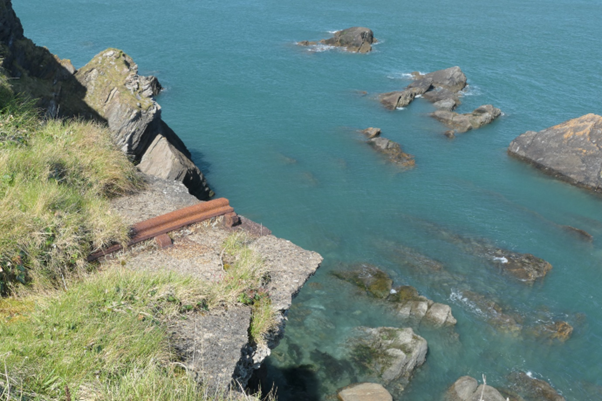
What is left of the curved rails known as ‘racers’ of the 64 pounder guns (pictures above and below
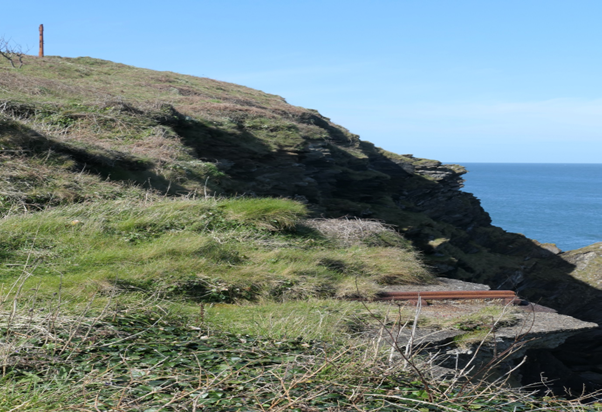
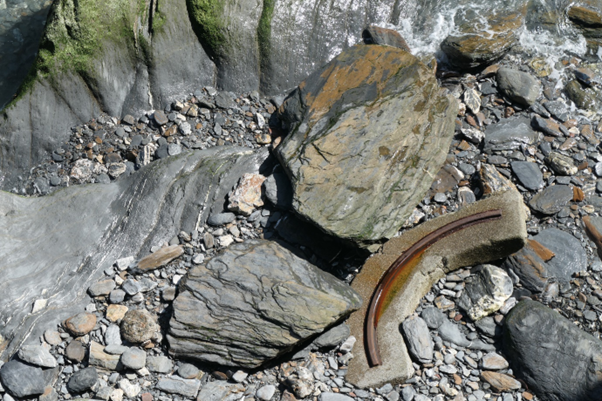
Most of the concrete gun platform has now fallen onto the beach below, so the pictures shown here are a pertinent reminder of this chapter in Hillsborough’s rich history. Please do not attempt to visit the remains of the battery as the cliffs are unstable.
References/Further Information.
All colour photos by Robert Schick Copyright-free
Artillery Volunteers, Ilfracombe, north Devon (johnhmoore.co.uk)
1st Devonshire Artillery Volunteers – Wikipedia
BBC Radio 4 – Home Front – The curious tale of the Kaiser on the Devon beach

